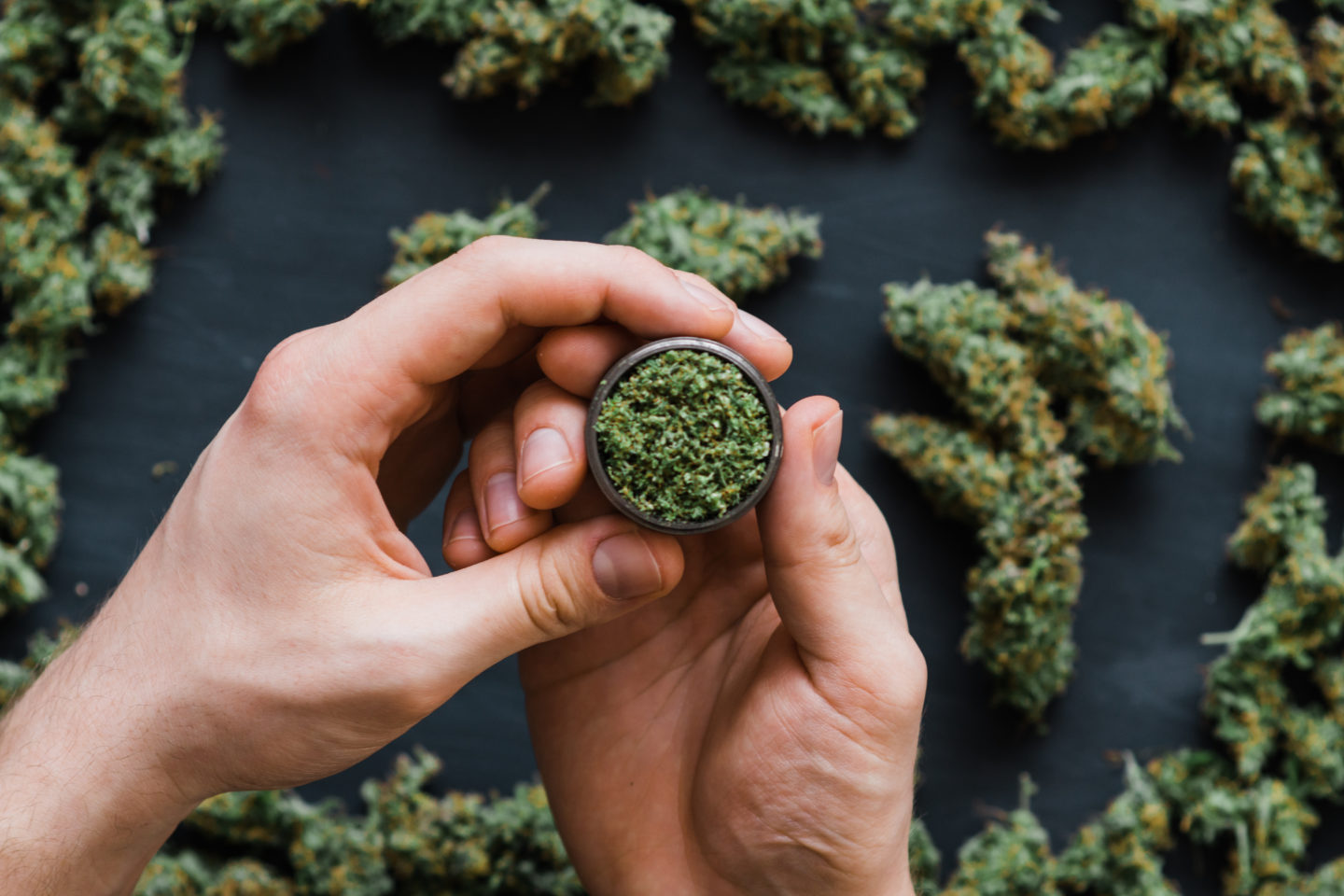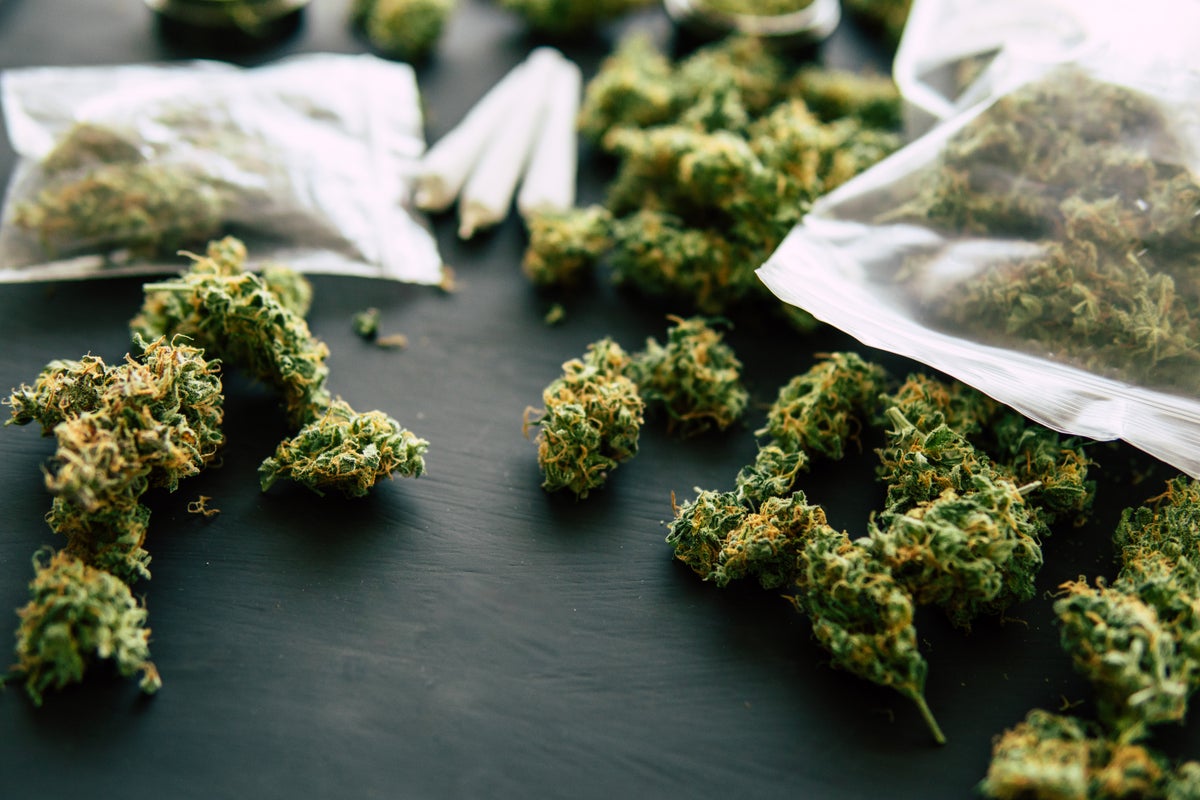11 Dec 2024

Tired Earth
By The Editorial Board

(Dmytro Tyshchenko / Shutterstock)
Yet, despite its natural origins, the weed industry is actually harming the planet. The industry’s carbon footprint is growing rapidly for several reasons. Together, these problems roll up into one huge, complicated joint.
So sit back, spark it up and get ready—this one is a doozy.
The problem of weed cultivation is a layered one. Its roots stretch into law, agriculture, racial inequity and interstate commerce. First, let’s start with the plant itself.
The Press Democrat reported in 2014 that the average pot plant consumes up to six gallons of water per day. At this rate, these plants drink enough water to fill 160 Olympic-sized swimming pools over five months.
Researchers determined this through satellite images from California’s “Emerald Triangle” (Mendocino, Humboldt and Trinity counties). That’s only three counties in one state. There are 37 other states with supplies of thirsty pot plants.
A single adult plant also emits hundreds of harmful BVOCs a day. These BVOCs cause the same type of air pollution as car exhausts and smokestacks.
Of course, weed isn’t the only thirsty crop we grow in the United States. One pound of cannabis requires one gallon of water. One pound of almonds requires 1,900.
However, we didn’t demonize almonds for 100 years under racial pretenses. As I said, this issue’s roots run deep.
Weed laws differ across state lines. Therefore, we have to consider both legal and illegal grow operations. Both come with their fair share of concerns.
According to Politico, 80% of weed is grown indoors. Indoor growing maximizes plant yield, and the name of the game here is profit. This California study shows that indoor facilities use up to 2,000 watts of electricity per square meter. Additionally, it found that producing one kilogram of weed emits 4600kg of carbon dioxide.
The Resource Innovation Institute’s 2020 data shows that indoor grow operations have the largest environmental impact. Outdoor growing has the least. Finally, greenhouse operations sit in the middle. They use around 45% of the energy of an indoor site.
Switching to LED lights can help increase indoor efficiency. The Cannabis Reporter cites the EPA as saying, “LEDs offer the potential for cutting general lighting energy use nearly in half by 2030.”
But of course, it isn’t as simple as indoor vs. outdoor. Across all locales, Bloomberg Environment estimates that legal cannabis cultivation in the U.S. consumed 1.1 million megawatt-hours of electricity in 2017. That’s enough to power 92,500 homes for a year.
Now, the keyword here is “legal.” Bloomberg’s data doesn’t take into account illegal operations. These operations are harder to track, but their environmental impacts aren’t.
The United States made cannabis illegal in 1937. 59 years later, California became the first state to legalize cannabis with Proposition 215.
However, cannabis didn’t drop off the face of the earth during those 59 years. Illegal grow operations continued throughout cannabis’s prohibition, and they continue today.
In Humboldt County, California, law enforcement officers found 14,000 illegal grow sites on federal or private lands in 2018. Growers log heavily wooded areas to make room for farms. In doing so, they displace wildlife and use up vital water resources.

(Dmytro Tyshchenko / Shutterstock)
Illegal operations don’t follow the same environmental standards as legal ones, either. NPR reported in 2019 that many of these “trespass grow” sites use massive quantities of pesticides and other chemicals.
These chemicals include Bromethalin, a rat poison, and carbofuran, an insecticide banned by the EPA in 2009. Ecologist Greta Wengert spoke to NPR at an illegal grow site. During the interview, she points to a tree where she found a gallon of carbofuran.
“It is incredibly toxic,” she told NPR. “A quarter-teaspoon could kill a 600-pound black bear. So, just a tiny amount can kill a human. It remains in an ecosystem for a long period of time.”
“We have detected [carbofuran] in the soil, cannabis plants, in native vegetation, the water, the infrastructure,” Wengert continues. “You name it, we have detected it. It’s horrible.”
Mule deer, gray foxes, coyotes, northern spotted owls and ravens have also been victims of poisoning linked to weed farms. But these poisons affect more than the animals who ingest them.
The Pacific fisher, a type of weasel, is reaching endangered status at an alarming rate. When fishers ingest the poison, they pass those toxins to their offspring in utero. Salmon, too, are in danger of extinction due to dwindling water sources.
The American Medical Association opposed the Marihuana Tax Act of 1937. By the 1930s, doctors were well aware of weed’s medicinal properties. So, why did the government ban it?
According to Reefer Madness, the government began demonizing weed during a wave of Mexican immigration in the early 1900s. Mexican immigrants smoked cannabis. Therefore, cannabis must be dangerous.
However, several studies show that weed is safer than alcohol. If safety were the true concern, there would be no need to prohibit cannabis. Thus, we arrive at our final point.
The fact that cannabis remains federally illegal is a huge reason for its environmental impact. As this Rolling Stone article suggests, it’s the main reason weed has such a large carbon footprint.
“The crux of the problem is that federal prohibition means that you cannot transport any cannabis across state lines,” Baylen Linnekin, an agriculture lawyer, told Rolling Stone.
“That means that everything that’s going to be sold in any state has to be grown in that state, regardless of whether it makes any sense agriculturally.”
Interstate trade is the backbone of efficiency for most American products. “You can’t keep Florida oranges [or] Georgia peaches out of your state,” says Adam Smith, director of the Craft Cannabis Alliance.
Frankly, not all states are great at growing weed. Colorado fully legalized weed in 2012. But it also has one of the largest cannabis-related carbon footprints in the country. It just isn’t easy to grow crops in the Rockies year-round.
Alaska and Minnesota face similar energy consumption issues. But hot states are struggling, too. Areas like southern California, Nevada and Hawaii also use inefficient growing methods to beat the heat.
Further, state-to-state legalization accounts for a lot of interstate travel. Rather than shopping local, people travel to buy legal weed. More cars on the road lead to more carbon emissions, and the cycle continues.
Yet another weed-related issue is the nearly 40,000 Americans in prison for cannabis offenses. A 2020 study found prisons to be large contributors of greenhouse gas emissions. Mass incarceration, the publication reads, is as much an environmental problem as a social one.
Indeed, the cannabis industry is hotboxing the globe in more ways than one. And if we don’t start addressing the problem now, it could cause irreversible damage.
In April 2021, President Joe Biden announced a goal to achieve a 50% reduction in greenhouse gas pollution by 2030. In his statement, Biden singles out agricultural and industrial emissions. But without including cannabis in the mix, true progress is unlikely.
Federal legalization is one way to reduce weed’s carbon footprint. Allowing interstate commerce is another. Releasing inmates held on weed charges would also help. Despite this, Congress is locked in a slow-burning stalemate to do any of these things.
According to a 2020 Gallup Poll, 68% of Americans support legalizing weed. Cannabis demand isn’t showing signs of slowing. Nor has prohibition ever stopped the public from getting what they want. Besides all of this, we’ve used cannabis for thousands of years.
So, the only logical thing to do would be to keep the “green” in our green by legalizing and regulating weed production once and for all.
Source : gossipcop.com
Comment